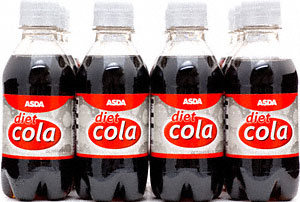No USP? No problem
A USP, or Unique Selling Point, is a unique attribute of a product, service or company that customers cannot get from any other source. By focusing on USPs, the received wisdom goes, firms can differentiate themselves from competitors and resist ‘commoditisation’, where competing products are effectively equal and customers buy primarily on price. Sugar and oil are commodities; MP3 players are not.
Most markets feature products and providers that are, to some extent, interchangeable: not completely commoditised, but not completely unique either. Each product or provider probably has some unique attribute, but it’s just one of many factors affecting buyers’ choices, along with price, quality, convenience, switching costs and so on.
If uniqueness isn’t the be all and end all for your product or firm, it follows that relying on USPs exclusively doesn’t always make for good copywriting, or good marketing. ‘Unique’ doesn’t necessarily equal ‘good’. In order to sell, your USP needs to meet all three of these criteria:
- Does it translate into a benefit for the customer?
- Is it clear – easy to communicate and understand?
- It is compelling – that is, does it have the power to motivate a switch from a rival product?
The sorts of attributes that might constitute strong USPs are:
- The only product to offer a particular function or benefit (patented devices, secret recipes, proprietary solutions)
- The only supplier to offer a particular range of services or set of skills under one roof (the ‘one stop shop’ argument)
- The only product, service or company of a certain type in a particular location
- The leading or largest company of its type, perhaps in a particular location
- The cheapest product or service of a particular type (but use with great caution: if price isn’t compelling, it won’t work as a USP – plus if you’re undercut, your USP goes down the pan).

The recipe for Coca-Cola is a good example of a USP. If you want the taste of Coke, you have to buy Coke. That’s a unique benefit, and one that’s easy to communicate (‘Coke is it’, ‘The real thing’, etc) and compelling for customers. However, there are many ‘generic’ colas that people also like and buy.
Similarly, UK entrepreneur Clive Sinclair understood in the late 1970s that home computers would not become truly popular until they were available at the right price point. By designing a machine (the ZX80) that could retail for under £100, he gave his product an unbeatable USP.
Very few firms have a ‘killer’ USP that can drive their whole marketing effort. But that doesn’t stop them using the USPs they do have, however ill-advisedly. I once worked for a firm that was over 200 years old. This point was much trumpeted in marketing and PR, since it positioned the company as an important part of local history – which, of course, it was. But although being long established is easy to communicate, it offers very little benefit to customers and therefore no reason to switch.
Other companies bend over backwards to achieve a USP just for the sake of it, setting up tiny ponds in which they can be the biggest fish. Don’t fall into this trap. If you have to scratch around for your USP, it’s unlikely to be effective. For example, I could position myself (I think) as ‘the only copywriter in Norwich with both publishing and agency experience’, but my clients couldn’t care less about that. ‘Experience, professional, reliable’ is clearer, more compelling and offers more benefit, even though it’s pretty generic and far from unique.
So what should you do if you haven’t got a strong USP? It comes back to the three points above:
- Communicate benefits. Work out (or ask!) what customers really value about what you do, and build your marketing around that. Don’t worry if it’s not unique – very few companies have a genuinely unique offer.
- Make it clear. Just clearly and simply convey the value you offer. So much marketing falls at the first fence by trying too hard to be unique – or different, clever, quirky, whatever – and neglecting the audience in the process. Why not stand out with some straight-talking copy, strong branding and elegant design?
- Compel the audience. Give people a reason to switch to you with a special offer, fixed-price package, free consultation or some other variation on the standard offering in your market.
Not being unique isn’t necessarily a barrier to success, but failing to connect with your audience certainly is.
Comments (2)
Comments are closed.

[…] This post was mentioned on Twitter by Alan Graner. Alan Graner said: No USP? No problem http://bit.ly/9IBypt #usp #copywriting […]
[…] benefit that people get when they choose your products or services. As I’ve suggested before, your selling point doesn’t have to be unique. But it does need to be […]